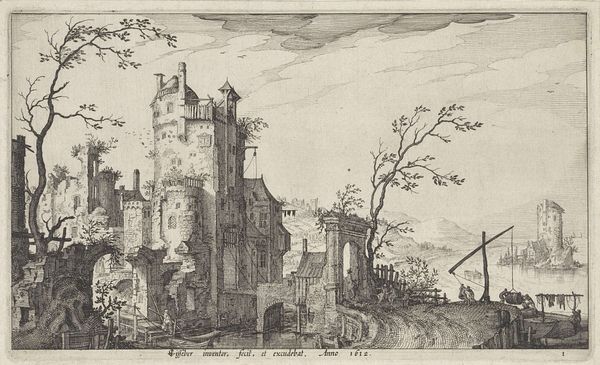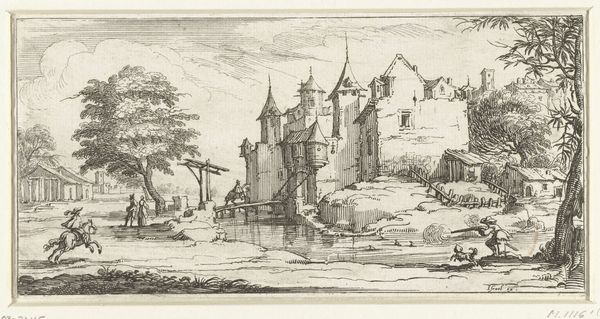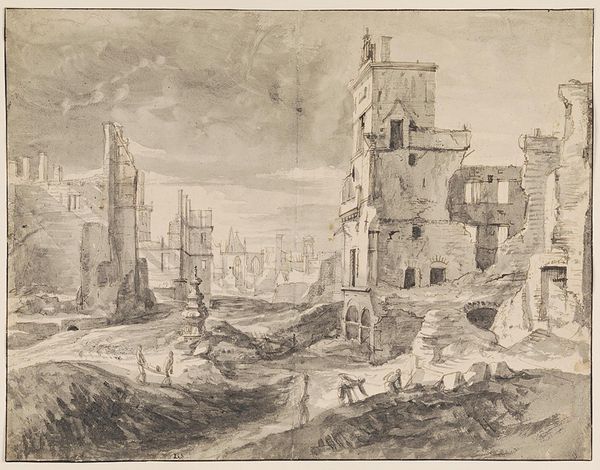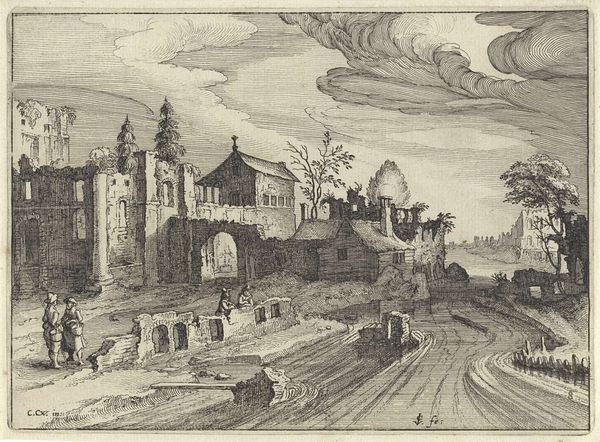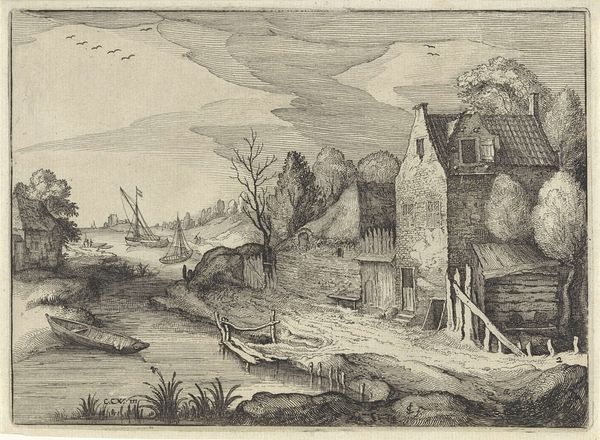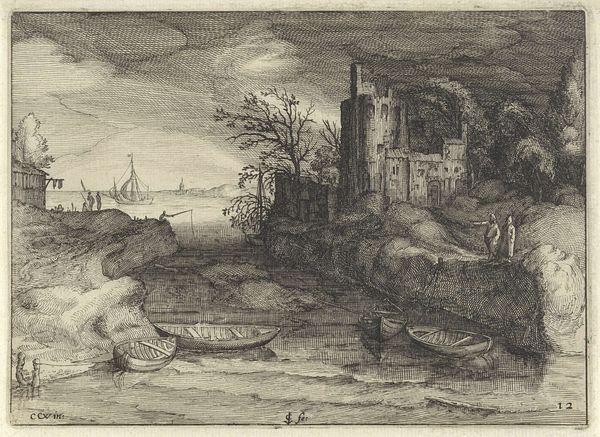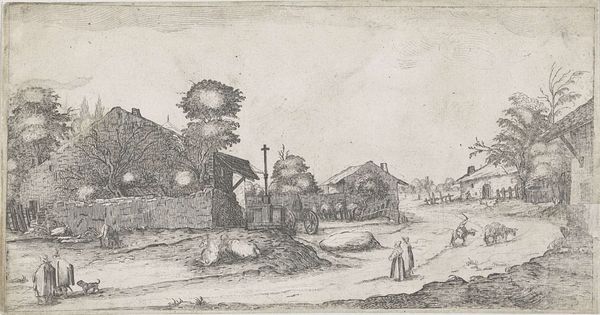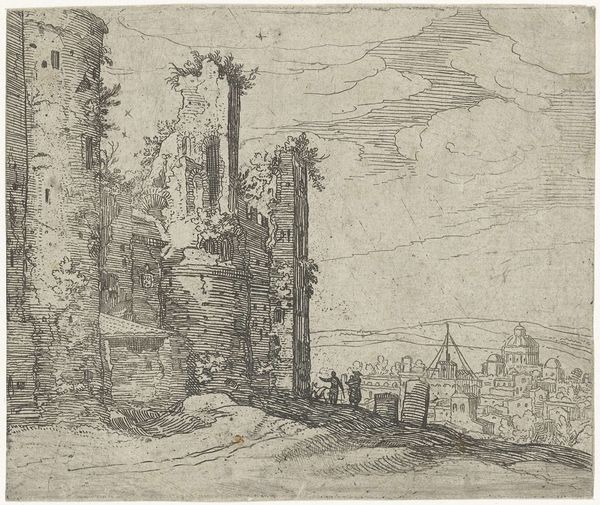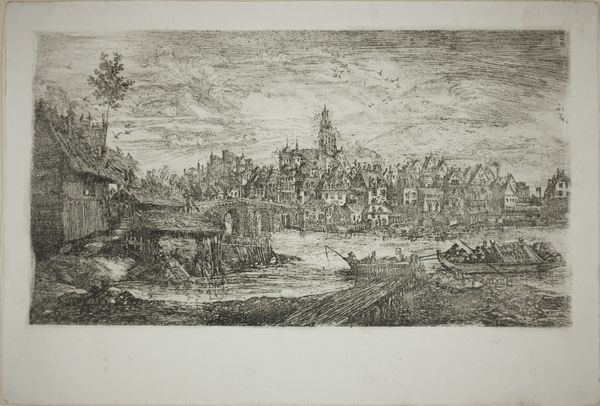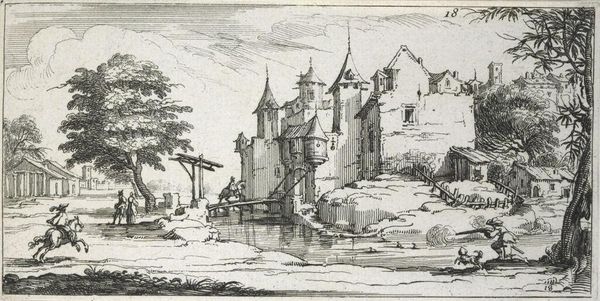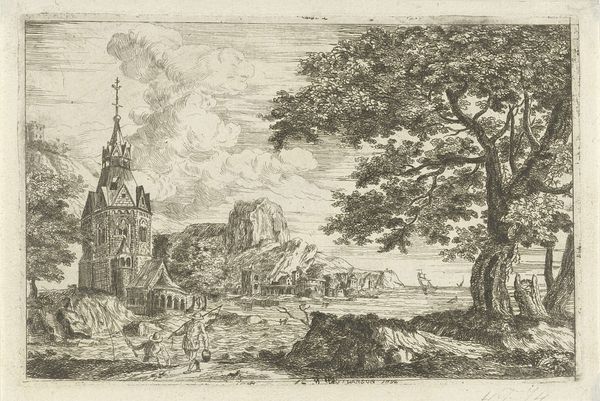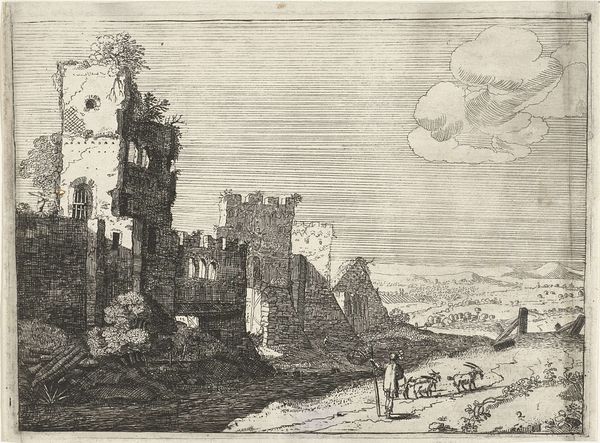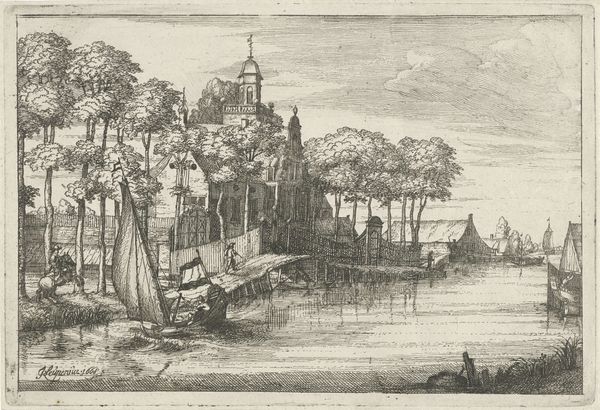
print, etching
#
baroque
#
pen drawing
# print
#
etching
#
landscape
#
river
#
form
#
line
#
cityscape
#
history-painting
#
northern-renaissance
#
realism
Dimensions: height 75 mm, width 168 mm
Copyright: Rijks Museum: Open Domain
Curator: The atmosphere feels overwhelmingly melancholic. Even the wispy clouds seem to express sorrow. Editor: That's interesting. This print, an etching by Cornelis Claesz. van Wieringen titled "Hilly Landscape with a View of a River," was likely made between 1614 and 1618, amidst a period of great political and social upheaval. Maybe we’re unconsciously picking up on that. Curator: Ruins are almost always symbolic. I see here suggestions of lost power, former strength. The crumbled architectural details speak volumes. Are those the ruins of Roman structures in a Dutch landscape? Editor: That's a keen observation! Yes, you are correct. The style and technique do situate the work in the tradition of Northern Renaissance printmaking, but with strong Baroque influence, there's a certain drama at play, with chiaroscuro techniques. The artist creates a contrast that seems exaggerated. It’s possible the intent here isn't literal representation. Instead, this image captures Dutch society's increasing cultural awareness of classical history. Rome was then as popular a subject as Greece is now. Curator: I'm captivated by the river that cuts through it. Water often symbolizes the passage of time or transition, doesn’t it? I think Wieringen’s river leads the viewer directly to those decaying structures, almost as though illustrating the impermanence of empires. Editor: That reading resonates strongly with historical trends of that time. Many northern European artists used landscape as a medium for both realism and history-painting, thus promoting cultural values or critiquing social order. That said, this artwork serves as more than a straightforward morality story. The landscape—detailed, yes, but stylized as well—hints towards humanity’s struggle to thrive after conflicts. Curator: After examining it more closely, I can see beyond only melancholy. The scene shows enduring strength in natural life. It has an elegiac quality to it as well. Editor: And so it exists on multiple levels, a picture carrying the weight of loss, time, transition and beauty that outlives any particular tragedy or political context.
Comments
No comments
Be the first to comment and join the conversation on the ultimate creative platform.
